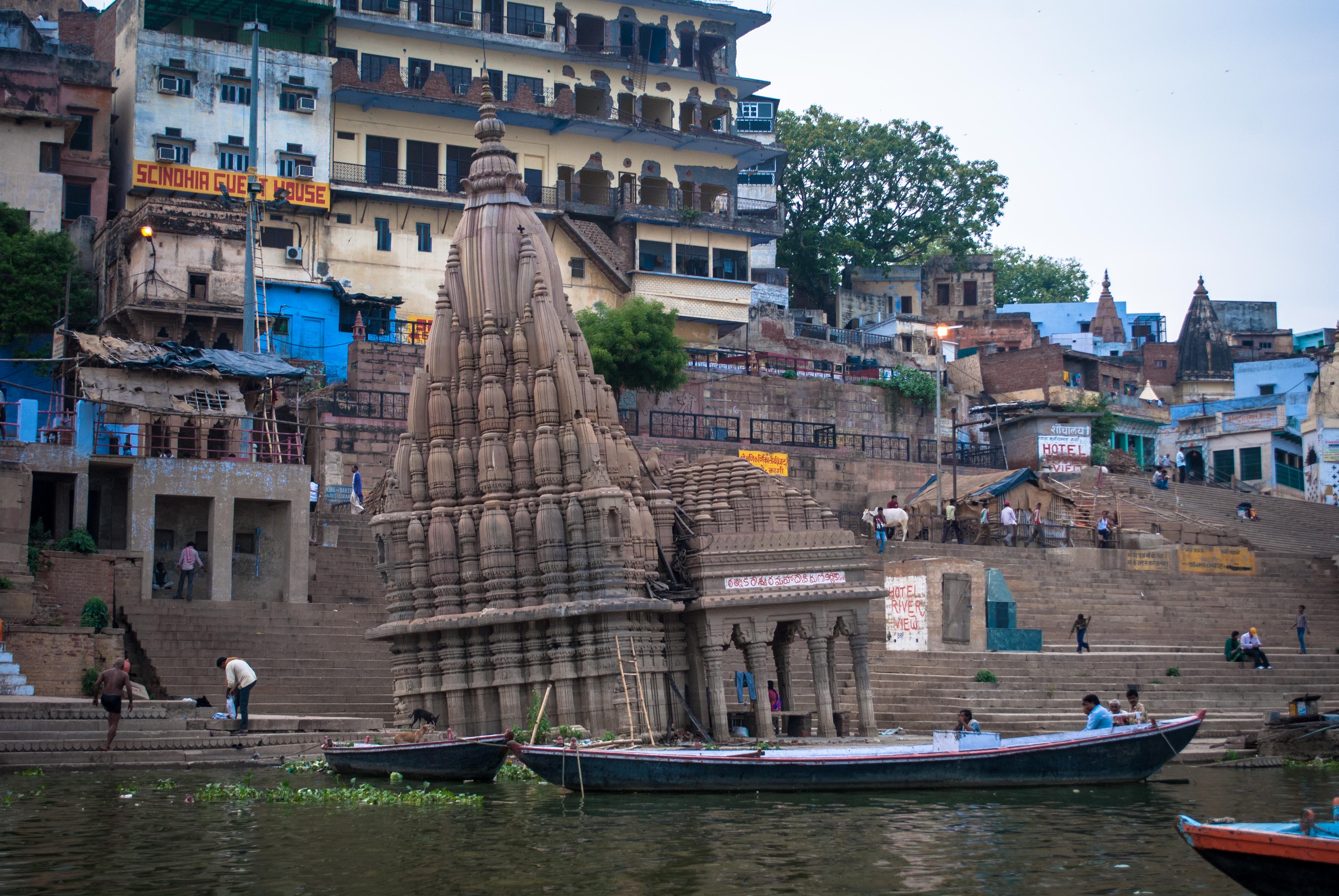Sacred Ghat of Liberation Where Death Meets Spiritual Transformation





Manikarnika Ghat represents the profound Hindu understanding of death as a transformative spiritual journey, nestled along the sacred Ganges in Varanasi. This ancient cremation ground embodies a unique philosophical perspective where mortality is not viewed as an end, but as a sacred transition towards ultimate liberation.
The ghat's mythological origins are deeply rooted in complex Hindu narratives involving divine figures like Goddess Sati, Lord Shiva, and Lord Vishnu. According to legend, when Goddess Sati immolated herself, her earrings fell at this precise location, christening it Manikarnika—meaning "jewel of the ear." This mythical event transformed the site into a Shakti Peeth, a place of immense spiritual potency.
Historically, Manikarnika Ghat represents more than a mere cremation ground; it is a profound cultural landmark mentioned in Gupta inscriptions dating back to the 5th century. Its stone stairs, initially constructed in 1303, have been meticulously maintained and upgraded by significant historical figures like Bajirao Peshva and Ahilyabai Holkar, preserving its architectural and cultural integrity.
The continuous cremation rituals occurring here 24 hours daily symbolize the Hindu belief in life's impermanence. Smoke perpetually rising from funeral pyres serves as a constant reminder of mortality's inevitable nature. Pilgrims and visitors from across the globe are drawn to this site, seeking spiritual understanding and witnessing the remarkable intersection of life and death.
Architecturally, the ghat represents a harmonious blend of historical construction and spiritual significance. Surrounding ghats like Dashashwamedh and Scindia further contribute to its rich cultural landscape. The presence of the Vishalakshi temple, one of India's 51 Shakti Peeths, adds another layer of religious significance to this already mystical location.
Varanasi's reputation as the "City of Death" is perhaps most powerfully embodied at Manikarnika Ghat. Here, death is not mourned but celebrated as a sacred passage towards spiritual liberation. Hindus believe that cremation at this site breaks the endless cycle of rebirth, offering the soul a direct pathway to divine enlightenment.
The ghat's cultural significance extends beyond religious rituals. It represents a complex philosophical understanding where human existence is viewed as a temporary journey. Elderly individuals often choose to spend their final days in Varanasi, seeking a peaceful transition and hoping to attain moksha—ultimate spiritual freedom—at this hallowed ground.
Photography is permitted at the ghat, allowing visitors to capture the profound spiritual atmosphere, though respectful distance during cremation ceremonies is paramount. Women are traditionally restricted from direct participation in cremation rituals but can observe from the riverbank, maintaining the site's deeply traditional spiritual ecosystem.
Discover more attractions within 50km that might interest you

Varanasi, Uttar Pradesh
Majestic Red Sandstone Fort on Ganges River Showcasing Varanasi's Heritage

Varanasi, Uttar Pradesh
Ancient Shiva Temple Where Spirituality and History Converge Majestically